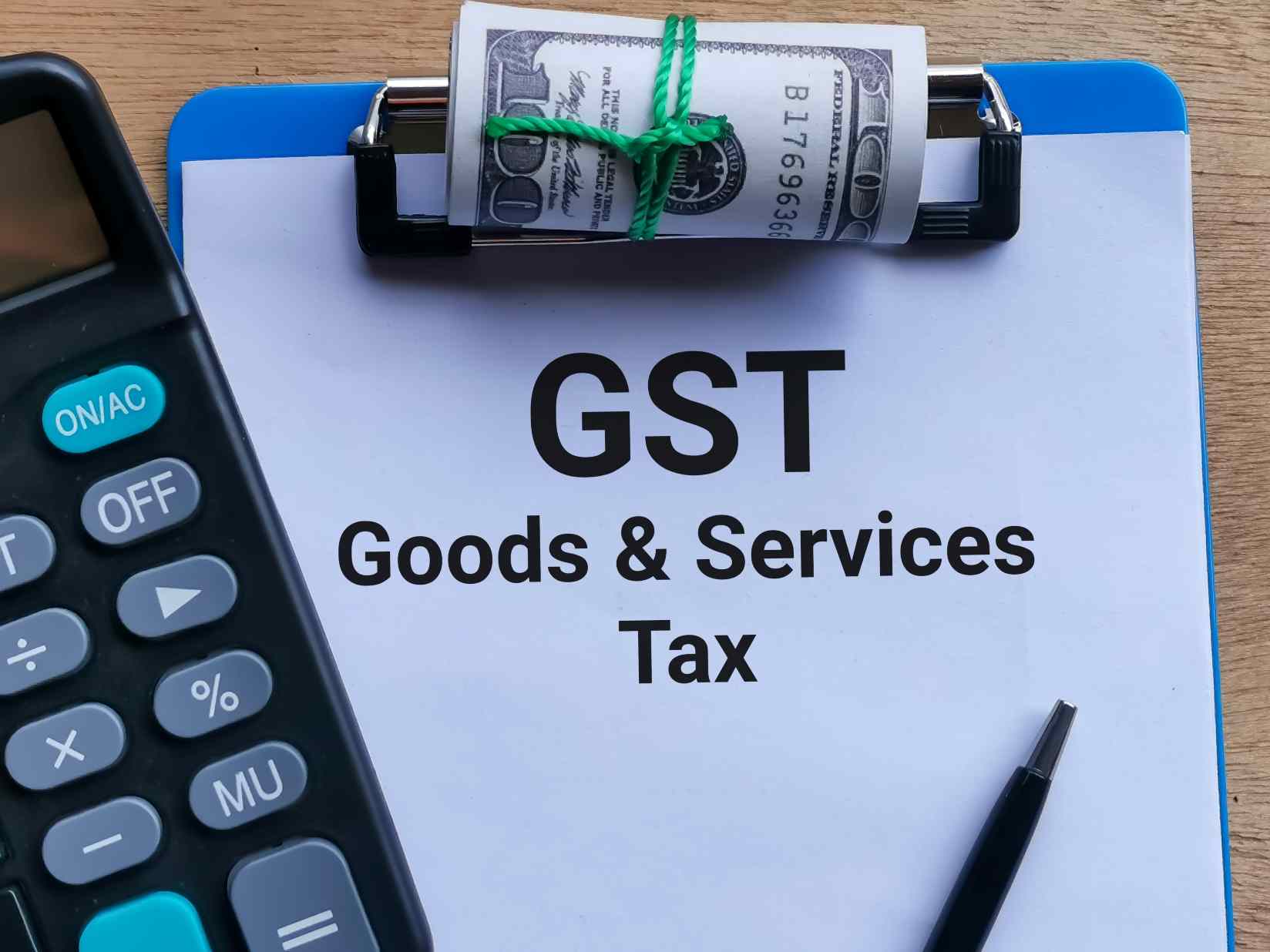Car Insurance Online, Up to 90% Off
9000+
Cashless Garages
96% Claim
Settlement Ratio
1.2 Cr+
Policies Sold
I agree to the Terms & Conditions
Buy Online for Huge Savings

Car insurance Online, Up to 90% Discount
It's a Brand New Car
9000+
Cashless Garages
96% Claim
Settlement Ratio
1.2 Cr+
Policies Sold
How GST Impact Car Insurance Premiums?

Buying car insurance in India involves filling out policies and the taxes that ultimately influence your premium. The Goods and Services Tax (GST) has significantly influenced the cost of car insurance, thereby affecting the amount one pays.
Whether renewing or taking out a new policy, the GST rate directly affects one's expenses. But how does this work? And what does it mean for your budget? Let us find out in this article.

Table of Contents

What is GST?
The Goods and Services Tax (GST) is a comprehensive tax applied to the sale of goods and services within a country. This tax is charged at each stage of the production and distribution chain, although it is ultimately borne by the consumer, who pays it at the point of sale. Usually, it is collected by the seller and passed on to the government.
GST defines simplicity in a tax structure as replacing various indirect taxes for easier compliance on the part of businesses. Generally charged at a single rate nationwide, it brings uniformity to the taxation process and transparency to the workings of taxes. This is also known as "One Nation, One Market, One Tax".
Impact of GST on Car Insurance Premium
GST entered the market in 2017 to replace service tax. Motor or car insurance policies are likely to undergo significant changes due to this development. The table below provides an overview of the impact of GST on insurance premiums:
Comparing Car Insurance Premiums Before and After GST
The introduction of GST modified financial rules affecting car insurance regulations. A key difference following the introduction of GST involves taxation rates because service tax used to be 15%, but GST now stands at 18%. A 3% increase in insurance premiums resulted in higher costs for policyholders to maintain their insurance plans.
The previous tax rate resulted in cheaper policy costs for policyholders. However, introducing GST transformed service tax into GST while altering the entire expense blueprint for customers. Insurance premiums decreased during the pre-GST period, but policyholder expenses rose when GST implementation began.
Consumer understanding of insurance policy changes supports their ability to select the right car insurance options during renewals or new purchases.
How to Calculate the GST on Your Car Insurance Premium?
GST is calculated on the car insurance premium starting from the base premium to which the GST rate applies. Below is the step-by-step procedure to find the total GST amount in your car insurance premium:
Step 1: Determine the Base Premium
Your standard policy fee, before tax, serves as the base premium. The calculated value incorporates combined elements from model type and age, Insured Declared Value (IDV), and risk profile assessment.
Step 2: Apply GST to the Base Premium
The next procedure requires applying GST to the total Base Premium amount. By law, the standard GST rate for car insurance amounts to 18%. To determine GST on your base premium, multiply it by 0.18 (18% of the amount).
GST Amount = (Base Premium × 18%)
For example, if your base premium is ₹10,000, the GST calculation will be:
GST Amount = 10,000 × 18%
GST Amount = ₹1,800
Step 3: Include Add-on Costs (if applicable)
Further expenses that make up the policy premium should be calculated during this phase (if applicable). The GST at an 18% rate applies to your policy add-ons, including zero depreciation, engine protection, and roadside assistance benefits.
Step 4: Calculate the Final Premium
The resulting premium payment amounts to the base premium total plus GST tax for the base premium, while GST for add-ons (if applicable) must be added too.
Total Premium = Base Premium + GST Amount
Using the previous example:
Total Premium = ₹10,000 + ₹1,800
Total Premium = ₹11,800
Can GST on Car Insurance Be Claimed?
The right to claim GST on car insurance depends on its use and the GST registration status of the vehicle concerned.
Businesses can claim an Input Tax Credit (ITC) on insurance premiums if the vehicle is used exclusively for business purposes.
However, for cars with up to 13 seats, ITC is not applicable unless the car is for resale, passenger transport or driving training.
For motor vehicles that seat more than 13 persons, ITC can be claimed if they are used in the business.
The GST paid on a car used personally is not claimable as a tax input.
Suppose the vehicle is used for both personal and business purposes. In that case, ITC can be claimed based on the proportionate use of the vehicle in a business, provided accurate records are maintained.
For compliance, businesses must retain GST invoices and insurance receipts as evidence of official tax guidance.
How GST Affects Claims and Payouts in Car Insurance?
Car insurance claims and financial payouts have undergone various changes due to the implementation of GST, which affects both policyholders and insurers. The following key points reveal how GST affects them:
GST on Claim Settlements
A car insurance claim settlement conducted by insurers includes expenditures at garages for which they must pay an 18% GST. This means that the insurer must include GST when directly paying for garage services, which causes the claim amount to increase. The policyholder must maintain a record of the GST invoice to be eligible for a full refund.
Increased Repair Costs
A car insurance claim settlement conducted by insurers includes expenditures at garages for which they must pay an 18% GST. This means that the insurer must include GST when paying for garage services directly. This causes the claim amount to grow. The policyholder must maintain a record of the GST invoice to be eligible for a full refund.
Impact on Cashless and Reimbursement Claims
Insurance companies coordinate payment of GST to network garages during the cashless claims process to ensure customers experience effortless claim settlement. The process for reimbursement claims requires policyholders to cover the entire repair bill, including GST, until their insurer provides reimbursement funds, which can lead to delays and errors.
GST on Total Loss and Theft Claims
After evaluating damaged cars that are beyond repair or subject to theft claims, insurers provide payments based on the insured's declared value (IDV) of the vehicle. GST payments are not returned individually to policyholders during these situations, resulting in small monetary losses.
GST on Add-ons in Car Insurance
The 2017 GST implementation eliminated the 15% service tax on motor vehicle insurance by establishing a taxation rate of 18% for vehicle insurance premiums. The 3% increase in taxation immediately affected the total cost of insurance policies, including both baseline premiums and add-ons.
The GST tax paid for initial car insurance premiums extends to cover supplemental insurance options that customers select during policy purchase, such as:
For Example: The base premium for car insurance policies stands at ₹20,000 while the additional Zero Depreciation Cover comes with ₹5,000 premium cost.
GST Calculation:
GST on Base Premium: ₹20,000 × 18% = ₹3,600
GST on Add-On: ₹5,000 × 18% = ₹900
The total premium amount to be paid sums to ₹29,500, which includes:
Base Premium: ₹20,000
GST on Base Premium: ₹3,600
Zero Depreciation Add-on Coverage: ₹5,000
GST on Add-on: ₹900.
How to Minimise the Impact of GST on Your Car Insurance Premium?
Several strategies can help mitigate the impact of GST on your car insurance premium. Here are some ways to possibly lessen the financial burden of GST on your car insurance:
Choose a Higher Deductible
Selecting a higher deductible is the most effective way to reduce your levied GST. A higher deductible lessens the base premium and the GST. Hence, with a smaller monthly premium, your GST amount is also smaller.
Add-Ons, the More the Merrier
Rather than making individual, separate purchases of add-ons, buying packaged bundles can reduce the overall cost and GST burden associated with the individual add-ons.
Insurer Choice
Varying premium rates result in varying GST impact. Different insurers establish their own GST applicability and compliance processes. To this effect, a competitive search for premiums should minimise the GST impact.
Input Credit on Business Use
Input Tax Credit (ITC) could be available on the car insurance premium if the car is used for any business activity. This, in effect, reduces the GST charged on car insurance, thereby lowering the effective insurance cost.
Multi-Year Policies
Buying multi-year insurance policies in advance can hold the present GST rate for an extended period, thereby saving you from future increases in GST at the time of renewal of such policies.
















